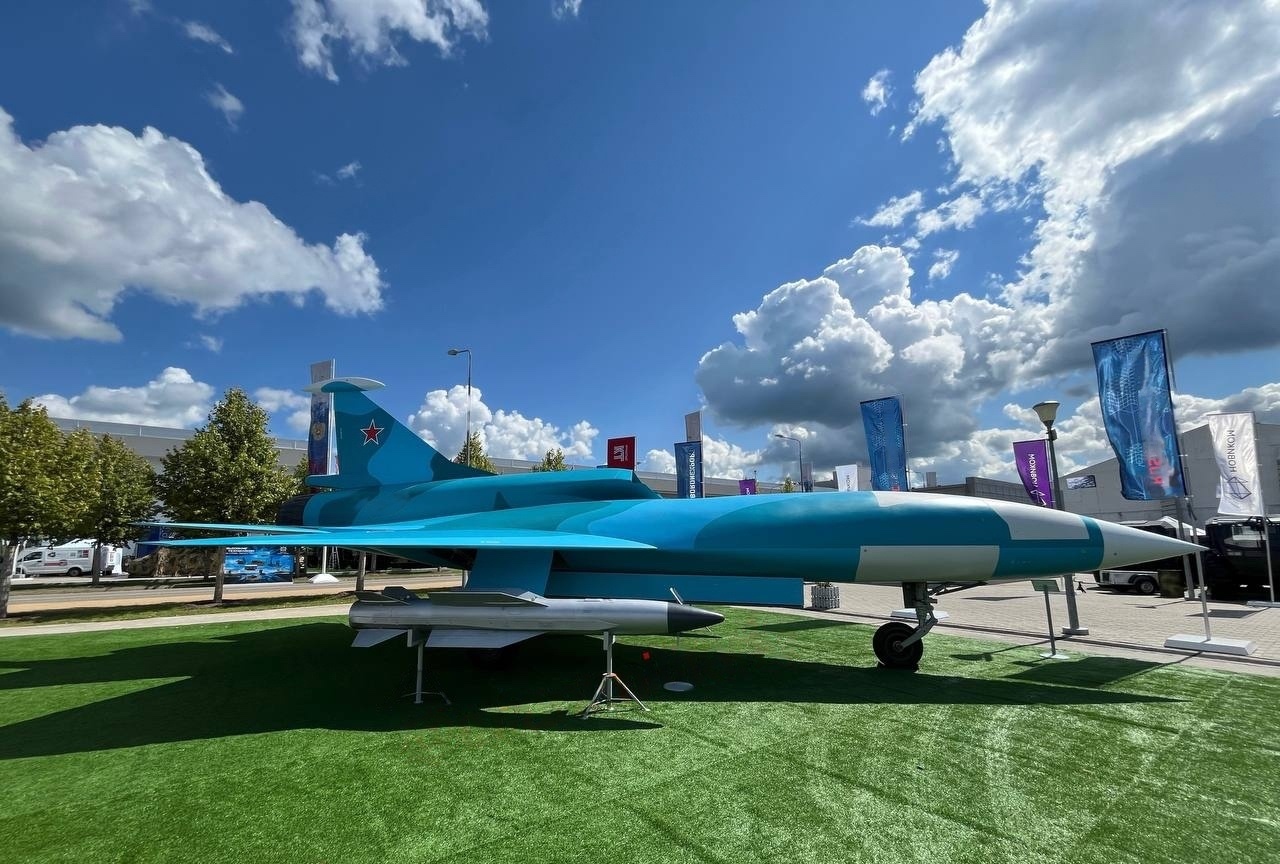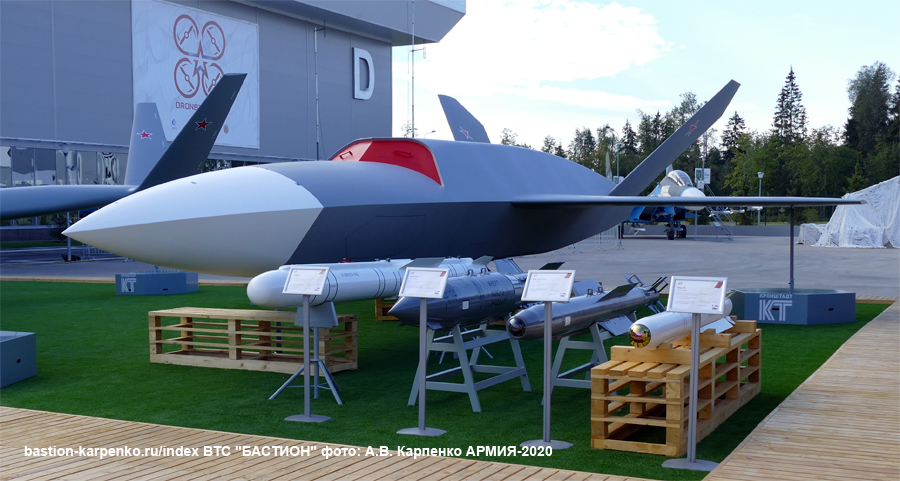Russia’s Grom drone, initially revealed in 2020, has been completely refurbished, as showcased by its recent debut at the Army-2024 Forum. The new design has striking similarities with the Cold War-era drones.
Amid the growing popularity of manned-unmanned teaming of aircraft in combat, Russia has debuted a new ambitious design concept for an unmanned combat air vehicle (UCAV) that may be dubbed a “loyal wingman.”
The drone known as ‘Grom,’ initially introduced by the manufacturer, Kronshtadt, at the Army Forum-2020, has been reintroduced as a new model, although it retains the same name.
With images of the new drone’s mock-up circulating widely on social media, observers and military analysts have pointed out that the design bears a resemblance to a fighter jet and appears to have prioritized speed and lethality over low-observable features and survivability.
In contrast to many contemporary UCAVs, the Grom was predominantly designed as a tactical aircraft during the Cold War. It features a classic tail comprising a vertical fin and horizontal stabilizers, as well as a distinctive cropped delta wing.
This iteration’s most notable modification is the conventional engine, originally intended to replace the flat-nozzle engine. Since it is a loyal wingman aircraft, it would likely operate with cutting-edge fighters in the Russian Air Force, including the Su-35 and Su-57 aircraft.

However, the manufacturer or the Russian Ministry of Defense (MoD) did not reveal specific information about the plans for the Grom’s operation.
Experts and media reports noted that this new loyal wingman has a configuration reminiscent of World War-era aircraft like the Tu-141 and the Tu-143, which have, incidentally, been modified by the Ukrainian military to launch deep drone strikes in Russian territory since December 2022.
Grom UAV. 2/n pic.twitter.com/OP4cmt3g1d
— Michael Jerdev (@MuxelAero) August 12, 2024
A graphic published by manufacturer Kronshtadt depicts the internal weapons compartment and four underwing pylons. Some media reports surmised that the internal weapons bay of the Grom was most likely chosen to maximize the drone’s high-speed capabilities rather than merely reducing the aircraft’s radar cross-section.
The UAV is designed to operate closely with manned aircraft, carrying out air defense suppression, reconnaissance, and precision strikes. The design strategy involves positioning the UAV in front of a formation of aircraft, compelling enemy air defenses to target it, and thereby revealing their locations.
As per information accompanying the mock-up, the Grom UCAV will be instrumental in “detection and defeat” of tactical and local air defense systems, reconnaissance functions (including radio-technical reconnaissance), and defeating targets surface and ground targets at tactical and operational depth with precision weapons.
The Grom UCAV Has Been Repackaged
The Grom UCAV has been designed to carry a maximum combat load of 1,000–2,000 kilograms. The drone has a maximum speed of 1,000 kilometers per hour and a cruising speed of roughly 600-800 kilometers per hour.
Additionally, with an operational range of 700 kilometers and the ability to operate at altitudes of up to 12,000 meters, the UAV can engage targets across long distances.
The arsenal will have guided and unguided bombs as well as missiles weighing 100, 250, and 500 kilograms, along with anti-radiation missiles. To improve its striking capabilities, the UAV is also expected to be able to carry the guided missile Izdeliye 85.

According to Kronshtadt, the drone would “work as a wingman in the forward echelon in cooperation with manned aviation,” carrying out tasks like identifying and taking down ground-based air defense systems, conducting reconnaissance (including ELINT or Electronic Intelligence), and launching strikes on targets on land and at sea, including those located outside of front lines.
When Grom was first unveiled in 2020, experts stated that it might replace the S-70 Okhotnik, another loyal wingman project undertaken by Russia to operate with the Su-57 fighter jet. They noted that the S-70 did not have two key features crucial in combat: anti-air capabilities and being entirely or even partially directed by artificial intelligence (AI).
The original Grom was shaped more like other modern concepts with sharp similarities to the XQ-58 Valkyrie. Russian military bloggers projected the drone as a “Russian answer to the Valkyrie.”

At that time, Nikolai Dolzhenkov, the chief engineer at Kronshtadt, was quoted by Russian media as saying, “The outward similarity to ‘Valkyrie’ is there, but if you look at the project, the difference becomes obvious. The Russian drone is bigger, but most importantly, it has a much broader spectrum of capabilities.”
Additionally, the original Grom drone was expected to be able to command a group of ten smaller Molniya drones. Earlier, Kronstadt said these Molniya drones could be used in striking or reconnaissance modes. Reconnaissance drones are capable of flying back.” The Kronshtadt spokesperson stated that Molniya drones would communicate continuously with each other and the carrier drone.
Nonetheless, the conditions of combat have evolved considerably, and Russian weapons developers have been creating new designs based on the experience gained from the Ukraine War. For the Grom UAV, the emphasis appears to be on combat precision and speed rather than stealth.
- Contact the author at sakshi.tiwari9555(at)gmail.com
- Follow EurAsian Times on Google News




